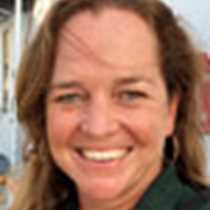Bartholomew and Santiago Islands
“Ecological Naïveté:” a wonderful term for an endearing phenomenon that occurs in oceanic islands. It refers to the complete innocence and lack of fear that the inhabitants of these strange, remote and isolated places show towards any other living creature entering their world. It has arisen over the millennia as a consequence of a complete lack of large scale predation: here in the Galápagos Islands, adult individuals of all but the very smallest of creatures have no predators at all, the top of the terrestrial food chain being the moderately-sized Galápagos hawk and the great blue heron! No large mammalian predators, such as cats or dogs, bears or weasels, could have survived a crossing of more than 600 miles of open ocean, under a tropical sun.
This particular characteristic of the fauna of these Enchanted Islands, as they were first called by awe-inspired early visitors, is what has stricken us first as we begin to explore the archipelago. We find it amongst iguanas and finches, sea lions and boobies, penguins and turtles. However, what is perhaps even more striking, is finding this naïveté amongst species as familiar to us as the aforementioned heron or the brown pelican! Whereas we would expect the pelican to flee as we approach, it just sits there looking down its beak at us, as curious about us as we are about it! The attitude of the inhabitants of the Galápagos towards us, the visitors, ranges from mild curiosity to complete indifference as we stroll, as though invisible, through a living nature documentary. Both today’s walks and our snorkelling outings drove this home, and we returned to the Islander exhilarated by an experience that will prove absolutely unparalleled.
“Ecological Naïveté:” a wonderful term for an endearing phenomenon that occurs in oceanic islands. It refers to the complete innocence and lack of fear that the inhabitants of these strange, remote and isolated places show towards any other living creature entering their world. It has arisen over the millennia as a consequence of a complete lack of large scale predation: here in the Galápagos Islands, adult individuals of all but the very smallest of creatures have no predators at all, the top of the terrestrial food chain being the moderately-sized Galápagos hawk and the great blue heron! No large mammalian predators, such as cats or dogs, bears or weasels, could have survived a crossing of more than 600 miles of open ocean, under a tropical sun.
This particular characteristic of the fauna of these Enchanted Islands, as they were first called by awe-inspired early visitors, is what has stricken us first as we begin to explore the archipelago. We find it amongst iguanas and finches, sea lions and boobies, penguins and turtles. However, what is perhaps even more striking, is finding this naïveté amongst species as familiar to us as the aforementioned heron or the brown pelican! Whereas we would expect the pelican to flee as we approach, it just sits there looking down its beak at us, as curious about us as we are about it! The attitude of the inhabitants of the Galápagos towards us, the visitors, ranges from mild curiosity to complete indifference as we stroll, as though invisible, through a living nature documentary. Both today’s walks and our snorkelling outings drove this home, and we returned to the Islander exhilarated by an experience that will prove absolutely unparalleled.




